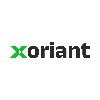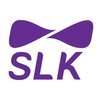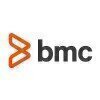Filter interviews by
Rackspace Technical Support Engineer Interview Questions, Process, and Tips
Rackspace Technical Support Engineer Interview Experiences
3 interviews found
I applied via Company Website and was interviewed in Feb 2024. There was 1 interview round.
(5 Questions)
- Q1. What is Active directory Tree, Forest, OU, sites, DNS
- Ans.
Active Directory is a directory service that stores information about objects on a network and allows for centralized management.
Active Directory Tree: A collection of domains that share a contiguous namespace.
Active Directory Forest: A collection of one or more AD trees that do not share a contiguous namespace.
OU (Organizational Unit): A container within a domain that can hold users, groups, computers, and other OUs.
S...
- Q2. How AD replication works and troubleshooting steps if AD replication fails.
- Ans.
AD replication is the process of copying and distributing data between domain controllers in Active Directory.
AD replication ensures that changes made on one domain controller are synchronized with other domain controllers in the network.
Troubleshooting steps for AD replication failure include checking network connectivity, DNS configuration, firewall settings, and replication topology.
Common tools used for troubleshoo...
- Q3. What is Sysprep ?
- Ans.
Sysprep is a tool used to prepare a Windows system for cloning or imaging by removing unique identifiers and resetting system settings.
Sysprep stands for System Preparation Tool.
It is used to remove system-specific information from a Windows installation, such as unique identifiers like SID and computer name.
Sysprep resets the Windows activation and licensing information.
After running Sysprep, the system is ready to be...
- Q4. Diffrent between VM Cloning and templete.
- Ans.
VM cloning creates an exact copy of a virtual machine, while a template is a pre-configured image used to create new VMs.
VM cloning duplicates an existing VM with all configurations and data intact.
Templates are pre-configured images used as a baseline for creating new VMs.
Cloning results in an identical copy, while templates are used as a starting point for customization.
Cloning is useful for creating backups or testi...
- Q5. Raid Configuration.
Skills evaluated in this interview
I applied via Company Website and was interviewed in Feb 2021. There were 5 interview rounds.
Interview Questionnaire
22 Questions
- Q1. DNS records (Mail exchange records, PTR records, SOA records, A and AAAA records )
- Q2. All port numbers (FTP, HTTP, HTTPS, DNS, UDP, SSH, MS SQL, My SQL, RDP, SMTP, Pop3, IMAP)
- Q3. OSI vs TCP/IP
- Ans.
OSI and TCP/IP are both networking models, but OSI has 7 layers while TCP/IP has 4 layers.
OSI stands for Open Systems Interconnection and TCP/IP stands for Transmission Control Protocol/Internet Protocol.
OSI has 7 layers: Physical, Data Link, Network, Transport, Session, Presentation, and Application.
TCP/IP has 4 layers: Network Interface, Internet, Transport, and Application.
OSI is a theoretical model while TCP/IP is ...
- Q4. Difference between HTTP and HTTPS?
- Ans.
HTTP is unsecured while HTTPS is secured with SSL/TLS encryption.
HTTP stands for Hypertext Transfer Protocol while HTTPS stands for Hypertext Transfer Protocol Secure.
HTTP operates on port 80 while HTTPS operates on port 443.
HTTP is vulnerable to attacks like man-in-the-middle and eavesdropping while HTTPS is secure against such attacks.
HTTPS uses SSL/TLS encryption to secure the communication between the client and se...
- Q5. SMTP, IMAP/POP3 and port numbers
- Q6. Difference between public IP and private IP?
- Ans.
Public IP is accessible from the internet while private IP is only accessible within a local network.
Public IP is assigned by the ISP and is unique to the internet.
Private IP is assigned by a router and is unique within a local network.
Public IP allows devices to communicate with the internet.
Private IP allows devices to communicate within a local network.
Examples of public IP include 8.8.8.8 and 216.58.194.174.
Example...
- Q7. How to check who owns an IP?
- Ans.
To check who owns an IP, use a WHOIS lookup tool.
Use a WHOIS lookup tool to find the owner of an IP address.
WHOIS lookup tools can be found online or through command line interfaces.
Enter the IP address into the WHOIS lookup tool to retrieve information about the owner.
The information provided may include the owner's name, contact information, and organization.
Some WHOIS lookup tools may require payment or registration
- Q8. Firewalls and its types
- Ans.
Firewalls are network security systems that monitor and control incoming and outgoing network traffic.
Firewalls can be hardware, software, or cloud-based.
Types of firewalls include packet-filtering, stateful inspection, proxy, and next-generation firewalls.
Packet-filtering firewalls examine packets and filter them based on pre-defined rules.
Stateful inspection firewalls keep track of the state of network connections an...
- Q9. OSI model including switching and routing.
- Q10. Load balancers and how they work
- Ans.
Load balancers distribute network traffic across multiple servers to improve performance and availability.
Load balancers can be hardware or software-based
They use algorithms to distribute traffic based on factors like server health and response time
Load balancers can improve scalability and reduce downtime
Examples of load balancers include NGINX, F5, and Amazon ELB
- Q11. Difference between IDS and IPS?
- Ans.
IDS detects and alerts about potential threats, while IPS detects and prevents them.
IDS stands for Intrusion Detection System
IPS stands for Intrusion Prevention System
IDS monitors network traffic and alerts about potential threats
IPS actively blocks potential threats
IDS is passive and does not interfere with network traffic
IPS is active and can modify or block network traffic
IDS can be used for forensic analysis after ...
- Q12. Difference between PowerShell and CMD? Troubleshooting commands for both.
- Ans.
PowerShell is a more advanced command-line interface than CMD, with more features and capabilities.
PowerShell is object-oriented, while CMD is text-based
PowerShell has more advanced scripting capabilities
PowerShell has more built-in commands and modules
CMD is more limited in its capabilities
Troubleshooting commands for PowerShell include Get-Help, Get-Command, and Test-NetConnection
Troubleshooting commands for CMD incl
- Q13. RAID and clustering in Windows
- Ans.
RAID and clustering are two different technologies used in Windows for data redundancy and high availability.
RAID stands for Redundant Array of Independent Disks and is used to combine multiple physical disks into a single logical unit for data redundancy and performance improvement.
Clustering is used to provide high availability for applications and services by grouping multiple servers together to act as a single sys...
- Q14. Where would you go to review windows events/logs? What kind of events would you see in each log App/security/system?
- Ans.
Windows events/logs can be reviewed in Event Viewer. App log shows application events, Security log shows security-related events, and System log shows system events.
Open Event Viewer by typing 'eventvwr' in the Run dialog box
Application log shows events related to applications and programs
Security log shows events related to security, such as logon attempts and resource access
System log shows events related to the ope...
- Q15. Commands such as mv command, cat command, df-h, vim, ssh, top and free-m commands in linux
- Q16. What is a Cron job and set it up process in Linux?
- Ans.
A Cron job is a scheduled task that runs automatically at specified intervals in Linux.
Cron is a time-based job scheduler in Linux.
It is used to automate repetitive tasks like backups, updates, etc.
Cron jobs are defined in a crontab file.
The syntax for setting up a Cron job is: * * * * * command-to-be-executed
The five asterisks represent the minute, hour, day of the month, month, and day of the week respectively.
For ex...
- Q17. What is load average in Linux? What is the command and path for the same?
- Ans.
Load average is the average number of processes waiting to run on a CPU. Command: 'uptime' or 'top'.
Load average is a measure of system utilization.
It is the average number of processes waiting to run on a CPU.
It is calculated over a period of time, usually 1, 5, and 15 minutes.
High load average indicates that the system is overloaded.
Command to check load average: 'uptime' or 'top'.
Path for 'uptime': /usr/bin/uptime
Pa
- Q18. Protocols used to login to Linux server.
- Ans.
SSH and Telnet are the most commonly used protocols to login to Linux servers.
SSH (Secure Shell) is a secure protocol that encrypts the data transmitted between the client and server.
Telnet is an unencrypted protocol that transmits data in plain text.
SSH is the recommended protocol for logging in to Linux servers due to its security features.
Other protocols like FTP and SFTP can also be used for file transfer and remot...
- Q19. Cloud hosting Advantages and Disadvantages of cloud technology?
- Ans.
Cloud technology offers flexibility and scalability, but also comes with security concerns and potential downtime.
Advantages: flexibility, scalability, cost-effectiveness, accessibility, automatic updates
Disadvantages: security concerns, potential downtime, dependency on internet connectivity, limited control over infrastructure
Examples: Amazon Web Services, Microsoft Azure, Google Cloud Platform
Security concerns: data...
- Q20. Why would you choose a Cloud solution over a "traditional" dedicated solution?
- Ans.
Cloud solutions offer scalability, flexibility, and cost-effectiveness compared to traditional dedicated solutions.
Scalability: Cloud solutions can easily scale up or down based on demand.
Flexibility: Cloud solutions offer more flexibility in terms of customization and integration with other services.
Cost-effectiveness: Cloud solutions can be more cost-effective as they eliminate the need for expensive hardware and mai...
- Q21. Difference between public and private cloud? Which one is more secure and why?
- Ans.
Public cloud is shared by multiple organizations while private cloud is dedicated to a single organization. Private cloud is more secure.
Public cloud is accessible to anyone on the internet while private cloud is accessible only to authorized users.
Public cloud is less secure as it is shared by multiple organizations and there is a risk of data breaches.
Private cloud is more secure as it is dedicated to a single organi...
- Q22. What are cloud Service Models?
- Ans.
Cloud service models are the different ways in which cloud computing services are offered to users.
There are three main cloud service models: Infrastructure as a Service (IaaS), Platform as a Service (PaaS), and Software as a Service (SaaS)
IaaS provides users with virtualized computing resources, such as servers and storage, over the internet
PaaS provides users with a platform for developing, running, and managing appl...
Interview Preparation Tips
No GD for experienced candidates.
1st is telephonic technical round
2nd is zoom video session for advanced technical round with TL.
3rd round would be Aspiring Minds English test.
4th round will be On-call video session will be with TL and Managers.
If technically sound could be cleared easily as Technical Support Engineer
Skills evaluated in this interview
I applied via Company Website and was interviewed before Nov 2020. There was 1 interview round.
Interview Questionnaire
1 Question
- Q1. Dhcp,dns,lvm , troubleshooting
Interview Preparation Tips
Top trending discussions






Interview questions from similar companies

Technical Support Engineer Interview Questions & Answers
HTC Global Servicesposted on 19 Feb 2021
Interview Questionnaire
1 Question
- Q1. How to grow up myself
Interview Preparation Tips

Technical Support Engineer Interview Questions & Answers
Collabera Technologiesposted on 17 Jan 2025
(1 Question)
- Q1. About your previous work experience
Interview Preparation Tips

(2 Questions)
- Q1. Support L1,L2 Technical round AWS
- Q2. Salary

Technical Support Engineer Interview Questions & Answers
HTC Global Servicesposted on 1 Oct 2022
I applied via Referral and was interviewed before Oct 2021. There were 2 interview rounds.

(3 Questions)
- Q1. Finnone master activity
- Ans. We have support finnone master as per business requirement
- Q2. LOS production support,
- Ans. We have handle all LOS issue and taken necessary action my end as well co ordinate with vendor
- Q3. LMS production support
- Ans. Reschedule cases,knock off,manual advice,closer cases,add and modified applicant, co applicant and guarentor,mobile number change request,service branches change,downsize cases LOS and LMS
Interview Preparation Tips

I applied via Naukri.com and was interviewed in Nov 2020. There were 3 interview rounds.
Interview Questionnaire
1 Question
- Q1. C# in depth, .net core, Angular basics+, intermediate level, Azure basics, OOPS, CI-CD
Interview Preparation Tips

I applied via Naukri.com and was interviewed in May 2021. There was 1 interview round.
Interview Questionnaire
1 Question
- Q1. Anything can be asked from oops to design pattern level question. Simple to hard. It's kind of rapid fire.
Interview Preparation Tips

I applied via Naukri.com and was interviewed in Sep 2020. There were 3 interview rounds.
Interview Questionnaire
2 Questions
- Q1. What is event loop?
- Ans.
Event loop is a mechanism that allows non-blocking I/O operations in a single-threaded environment.
Event loop is used in programming languages like JavaScript and Python.
It manages the execution of multiple tasks by prioritizing them based on their priority level.
It continuously checks for new events and executes them in a loop.
It allows for efficient handling of I/O operations without blocking the main thread.
It is co...
- Q2. Difference between let var and const.
- Ans.
let, var and const are used to declare variables in JavaScript with different scoping rules and mutability.
let and var are used to declare variables that can be reassigned later, but var has function scope while let has block scope.
const is used to declare variables that cannot be reassigned and have block scope.
Using const does not mean the value is immutable, only the variable reference is.
let and const were introduc...
Interview Preparation Tips
Skills evaluated in this interview
Rackspace Interview FAQs
Some of the top questions asked at the Rackspace Technical Support Engineer interview -
Tell us how to improve this page.
Rackspace Interviews By Designations
- Rackspace Technical Support Engineer Interview Questions
- Rackspace Customer Success Manager Interview Questions
- Rackspace Oracle Database Administrator Interview Questions
- Rackspace Manager Interview Questions
- Rackspace Linux Support Engineer Interview Questions
- Rackspace Customer Service Specialist Interview Questions
- Rackspace Solution Architect Interview Questions
- Rackspace Analyst Interview Questions
- Show more
Interview Questions for Popular Designations
- Technical Support Executive Interview Questions
- Desktop Support Engineer Interview Questions
- Customer Support Executive Interview Questions
- Technical Support Associate Interview Questions
- Senior Technical Support Engineer Interview Questions
- Customer Support Associate Interview Questions
- Application Support Engineer Interview Questions
- Engineer- Customer Support Interview Questions
- Show more
Rackspace Technical Support Engineer Interview Process
based on 1 interview
1 Interview rounds
- Technical Round
Top Skills for Rackspace Technical Support Engineer
Technical Support Engineer Interview Questions from Similar Companies
Rackspace Technical Support Engineer Reviews and Ratings
based on 8 reviews
Rating in categories
|
Customer Success Manager
129
salaries
| ₹8 L/yr - ₹28 L/yr |
|
Cloud Engineer
121
salaries
| ₹6 L/yr - ₹24.1 L/yr |
|
Oracle Database Administrator
78
salaries
| ₹5.2 L/yr - ₹19.9 L/yr |
|
Network Security Engineer
64
salaries
| ₹7.2 L/yr - ₹23.7 L/yr |
|
Devops Engineer
64
salaries
| ₹7.4 L/yr - ₹25 L/yr |

Xoriant

CitiusTech

HTC Global Services

HERE Technologies
- Home >
- Interviews >
- Rackspace Interview Questions >
- Rackspace Technical Support Engineer Interview Questions













